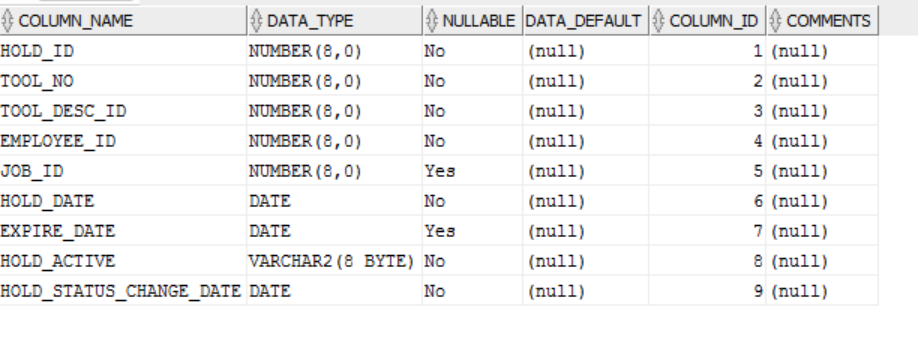Question
ORACLE SQL (1) Write and run an ALTER TABLE command to add a column that is of the TIMESTAMP data type to the hold_02 table
ORACLE SQL
(1) Write and run an ALTER TABLE command to add a column that is of the TIMESTAMP data type to the hold_02 table in your schema. Name the new column the hold_date_ts. (2) Write and run commands to retrieve the data from the altered table, and to update a record by adding in a timestamp type value into the new column that is 5 hours 5 minutes and 5.55 seconds later than the date and time value in the hold_date column of the row you are updating. To do this, just manually calculate the new value to be inserted and use TO_TIMESTAMP to convert the string representation to TIMESTAMP type for insertion. Note* You may have to look forward in the Murach book to find information about the TO_TMESTAMP function to help you accomplish this task. Also note that if you choose an existing record with the time value of midnight, the arithmetic is not difficult. Also write a command to retrieve the row with the updated data. (3) Now write and run an ALTER TABLE command to add a column that is of the TIMESTAMP WITH TIMEZONE data type, also adding the column to the hold_02 table. Name the new column expire_date_tz. (4) Write and run commands to retrieve the data you changed in step 3 from the altered table, and to update the same record by adding in a timestamp with timezone type value into expire_date_tz that is 7 hours 7 minutes and 7.77 seconds later than the date and time value expire_date column of the row you are updating and that is in a different time zone. Use functions demonstrated in Murach Chapter 17 to help you as needed, but use manual addition to predetermine the string value that represents the timestamp value you want to insert. Also write a command to retrieve the row with the updated data.*
Hold_02 table consists of:

This is all one question. Apologies. Please provide syntax
COLUMN NAME HOLD ID TOOL_NO TOOL DESC ID EMPLOYEE ID JOB ID HOLD DATE EXPIRE DATE HOLD ACTIVE HOLD STATUS CHANGE DATE DATE DATA TYPE NUMBER (8,0) NUMBER (8,0) NUMBER (8,0) NUMBER (8,0) NUMBER (8,0) DATE DATE VARCHAR2 (8 BYTE) NULLABLE DATA DEFAULT COLUMN IDCOMMENTS No No No No Yes No Yes No No (null) (null) (null) (null) (null) (null) (null) (null) (null) 1 (null) 2 (null) 3 (null) 4 (null) 5 (null) 6 (null) 7 (null) 8 (null) 9 (null)Step by Step Solution
There are 3 Steps involved in it
Step: 1

Get Instant Access to Expert-Tailored Solutions
See step-by-step solutions with expert insights and AI powered tools for academic success
Step: 2

Step: 3

Ace Your Homework with AI
Get the answers you need in no time with our AI-driven, step-by-step assistance
Get Started


